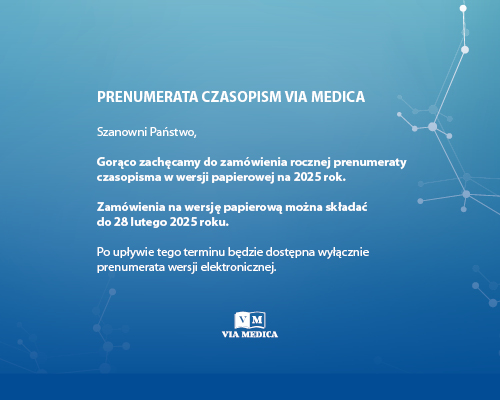Hypoglycaemia (HG) can be defined as a serum glucose level below 3 mmol/L (54 mg/dL), which might be diversely associated with both autonomic and neuroglycopenic symptoms [1]. The former include palpitations, anxiety, sweating, and pallor, while the latter comprise dizziness, fatigue, and vision impairment [1, 2]. Although HG frequently occurs as an exogenous insulin side effect, the condition also arises in non-diabetic patients, which often presents a difficult diagnostic challenge.
One of the most uncommon causes of symptomatic hypoglycaemia, especially in the non-Asian population, is insulin autoimmune syndrome (IAS) [3, 4]. By definition, it only concerns patients with no history of insulin treatment, and its underlying pathogenesis is associated with the presence of insulin autoantibodies (IAA) that interfere with the hormone’s bioactivity [2, 3]. Consequently, free and biologically active insulin is released after meals, which causes late postprandial HG episodes. While the exact aetiology of IAS remains unknown, genetic background (Human Leukocyte Antigen-DR4) as well as exposure to drugs (particularly those containing sulfhydryl groups) are presumed to contribute to the development of the disease [3, 4].
A 45-year-old woman was referred to the Endocrinology Department due to suspicion of insulinoma. The patient complained of diaphoresis, hand shakiness, and palpitations during the previous 3 months. Furthermore, she reported self-measured glycaemia as low as 2.2 mmol/L (40 mg/dL) up to 4 hours after a meal had been consumed. She had no history of neuroglycopaenic symptoms. She also denied the existence of any chronic diseases or treatment. Prior to admission, the patient underwent an oral glucose tolerance test (OGTT) and a short fasting test, with the records of insulin level exceeding 1000 μIU/mL. A contrast abdominal CT detected no significant abnormalities.
While in the hospital a 72-hour fasting test was performed. This revealed remarkably high insulinaemia (up to 386 μIU/mL) and the presence of ketones in the urine during fasting. At the same time, the C-peptide level remained within notable disproportion to insulin levels, whereas the fasting glucose level ranged between 3.4 and 5.3 mmol/L (61 and 95 mg/dL) (Fig. 1). To evaluate the presence of possible insulin-insulin antibody complexes, the polyethylene glycol (PEG) precipitation test was performed with insulin measurement prior to and after PEG addition. Based on these measurements only 3.5% of insulin could be recovered in supernatant, which was indicative of the IAA presence. The patient was advised to follow a low-glycaemic-index diet, and clinical follow-up reported improvement of hypoglycaemic symptoms.
Hypoglycaemia in a non-diabetic patient demands a thorough diagnostic process. In the case of suppressible insulin levels, hypoglycaemia is mainly attributed to insulinoma or nesidioblastosis and rarely to IAS [3]. The first test intended to provide contributory results is the 72-hour fasting test (Fig. 1). As for the insulin/C-peptide ratio (ICR), its value is normally lower than 1, because the insulin to C-peptide half-life ratio ranges within 1:3-1:7. If IAA form macro-complexes with insulin exclusively (having no capacity of binding proinsulin or C-peptide), this leads to the extension of insulin’s half-life far above that of C-peptide [3, 4]. Thus, ICR rises above 1, as happened in the case presented (range: 1.76–2.52; Fig. 1D). ICR remaining constantly above 1 contradicts the diagnosis of either insulinoma or nesidioblastosis. So does the extremely high insulin level (as recorded), because it is rarely observed in these conditions [2]. Moreover, low insulin recovery in 12.5% PEG precipitation (of < 10%) is only reported in IAS when it comes to hyperinsulinaemic hypoglycaemias [2]. Due to IAA assay unavailability, we resorted to the PEG-precipitation test, the advantage of which lies in its capacity to precipitate IAA of any class [2, 3]. Because there are no dedicated tests for identifying insulin macro-complexes, the protocol for macroprolactinaemia was applied [5]. While the measurement of IAA titres is recommended as mandatory in the diagnosis of IAS [2], this also has significant disadvantages. Firstly, it has limited availability in routine practise, which was the case in the situation described. Secondly, it is only G-class antibodies that the vast majority of IAA assays are able to detect. As a consequence, the result may be misleading in the case of patients with IAA of other classes, and therefore the PEG precipitation test should be regarded as a primary test [3, 4]. Misdiagnosis may lead to severe consequences, being followed by inappropriate treatment [3, 4], because IAS, unlike nesidioblastosis and insulinoma, does not require surgical management.
In conclusion, IAS should be taken into consideration while evaluating hypoglycaemia among non-diabetic individuals. The PEG precipitation test for macrocomplexes of insulin and antibodies may be useful in the diagnosis of IAS in some patients to prevent unnecessary invasive procedures.
Conflict of interest
None declared.
Ethics statement
Not required.
Author contributions
None declared.
Acknowledgments
None declared.



